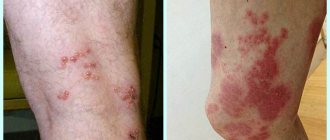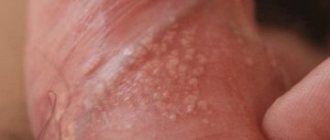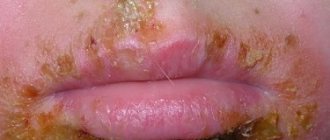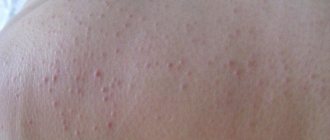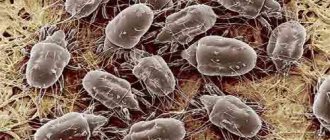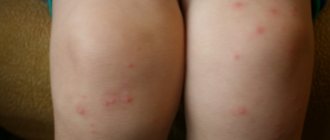Scarlet fever rash is a visual accompaniment of the above-mentioned disease. It manifests itself mainly in children of preschool and primary school age. In children under the age of one year, scarlet fever appears much less frequently, which is associated with the presence of transplacental immunity and arereactivity to the causative agent of this disease.
But at the same time, the effect of the disease is accompanied by the formation of purulent foci in various organs. In this case, external symptoms will be less pronounced than in an older child with a less dangerous form of the disease.
Scarlet fever is a rather complex infectious disease that occurs mainly in children, which has the old name “purple fever”. Its expiration occurs against the background of another disease, such as tonsillitis. The main symptoms of scarlet fever infection are:
- general intoxication;
- the tongue is bright crimson;
- skin rash.
Diagnosis for infection
To determine the body's predisposition to scarlet fever, its reaction to the pathogen is checked. It is a streptococcal infection diluted in a large ratio (0.2 ml).
It is injected using a syringe under the skin. After some time, a redness with a diameter of 5 to 30 mm forms around the mark with a positive reaction.
Attention! An excessively large dosage of the pathogen can lead to poisoning.
What causes scarlet fever rash in children and adults
The rashes on the patient's body are an allergic reaction to the effects of toxigenic strains of streptococcus (Dick's scarlet toxin).
This toxin consists of 2 fractions:
- Erythrogenic fraction. Erythrogenic toxin damages skin cells and increases the permeability of cell membranes. Because of it, cellular capillaries expand and the upper layers of the dermis become inflamed. In some cases, its action leads to tissue necrosis. It is this toxin that is responsible for the appearance of pinpoint rashes on the skin.
- Thermolabile fraction. The heat-labile toxin is a strong allergen. If the human body is susceptible to it, the number of skin rashes increases.
In addition to Dick's toxin in scarlet fever, the patient's body is affected by many other pathogens. These include streptolysin O, hyaluronidase, streptokinase, etc. They also cause an allergic reaction, rash and swelling.
Signs of scarlet fever
Symptoms of scarlet fever can be very diverse. It depends on the form and degree of development of the disease.
Stage 1
Sympatheticus is the stage of the disease during the first seven days of the week. The nature of the disease is as follows. Accompanied by a sharp increase in tone and a subsequent increase in blood pressure above the permissible norms for age categories. To determine the normal blood pressure, the following formula is used: 90+2n, where n is the number of complete years of the child.
Stage 2
When the disease passes into a protracted form - toxic, inflammatory processes develop in the following parts of the body:
- in the throat;
- in the tonsils (in addition, necrosis of the epithelium is manifested);
- in the esophagus.
Added to all the delights are the following symptoms, which cannot be observed externally:
- pathologies in the work of the spleen, liver, myocardium;
- significant change in microcirculation in the brain.
Stage 3
At the next stage, the nature of the disease changes for the worse. Necrosis becomes aggravated; further progression of the disease leads to purulent melting of the regional lymph nodes. In this case, the locations of the main focus of purulent inflammation will be:
- ear;
- joints;
- kidneys;
- serous cavities.
Acute form of the disease
Scarlet fever develops into an acute form already on the second day after contact with the spreader. This period can extend up to one week. In frequent cases, depending on the level of the body’s defenses, the incubation regime may be reduced to one day or increased to two weeks.
General signs of scarlet fever
- a sharp increase in temperature;
- pain in the mouth;
- frequent vomiting;
- after some time, up to 1 day, a rash appears, and it soon covers the entire body of the patient.
Symptoms
You can become infected with the disease from a person with scarlet fever or tonsillitis, as well as from people who are carriers of streptococcus. The infection enters the human body through airborne droplets, through household objects and food .
Usually the onset of the disease is acute, manifested by the following symptoms:
- increase in body temperature to 38-39°C;
- the appearance of nausea, vomiting;
- constant weakness, lethargy;
- pain symptoms in the head;
- muscle and joint pain;
- pain in the abdomen, mainly in childhood;
- skin rash.
If the infection enters the body orally, a purulent inflammatory process may begin in the mouth . Such changes resemble purulent tonsillitis and are characterized by the following symptoms:
- light yellow coating on the tongue;
- pronounced swelling of the tonsils;
- formation of follicles with purulent contents;
- intense redness on the membranes of the tonsils.
Most often, the infection settles on the tonsils, so the disease often occurs together with intense pain in the throat.
What does a scarlet fever rash look like?
To accurately determine the disease and its nature, you need to know exactly what the scarlet fever rash looks like. With many types of diseases, a rash appears, but with scarlet fever it has a point origin. The spots are located on skin that has undergone changes as a result of the disease. In this case, a larger number of formations accumulate in the skin folds.
In the more acute form of the disease, the scarlet fever rash is so thick that blisters with clear liquid begin to form. It received a new name - miliary. At the same time, bluish spots appear on the skin. The duration of the rash is from 3 to 7 days. After its successful disappearance, the skin begins to peel off.
The main symptom of scarlet fever, which does not go away for a minute, is tonsillitis. At the same time, it can also take and transform into different forms:
- catarrhal;
- follicular;
- necrotic.
If the patient has necrosis of a greenish or dirty blue color, then the nature of the sore throat changes into a long-lasting one and drags on for 10 days. In catarrhal and follicular forms of the disease, angina occurs within 5 days.
Stages of tongue color change
- At the first and weakest stage of scarlet fever, the tongue is covered with a thick yellow-gray coating.
- In subsequent stages or after 3 days, it becomes a bright crimson color and remains that way for up to two days.
The nature of the disease with scarlet fever in children is extensive and affects the cardiovascular system. At the same time, certain changes occur in it, which can be present from two weeks to 6 months, depending on the resistance of the body itself.
The patient may have a high fever for a little more than a week, although in the normal course of the disease it goes away after 3 days. During this period, meningeal symptoms may appear.
Localization of rashes
The first rash with scarlet fever occurs in the evening or a day after infection, with a bright red rash resembling small dots.
As a rule, rashes begin to form in the neck and face in the form of small spots that merge into groups . After this, the rash is detected:
- on the insides of the thighs;
- in the chest area;
- on the sides of the abdomen.
The typical localization of a scarlet fever rash is as follows:
- groin area;
- armpit area;
- bend your elbows and knees.
In these places, the rashes are usually especially thick and soon spread throughout the body..
Spots on the skin arise as a reaction of the human body to an incoming allergen formed when streptococcus invades.
Treatment options
As a rule, treatment of children with scarlet fever is carried out at home. If the nature of the disease suddenly changes into a more severe form, then hospitalization is necessary.
When the first signs of the disease are detected, the patient must be provided with a separate room and ensure that he does not have contact with anyone. In this case, the main condition is to ensure constant cleanliness of his skin, frequent washing and taking baths.
If the character changes to a more severe form, then baths should be replaced with wiping using disinfecting solutions and herbal decoctions. Here you can use chamomile, celandine or string. The temperature should be maintained at a constant level of 20 degrees.
It is necessary to regularly rinse the mouth with antiseptic solutions. Miramistin may be one of the most effective. It has excellent disinfecting effects on streptococcal bacteria. But before you start using this product, you should consult your doctor, because it is an allergen.
The next stage of effective recovery is the use of symptomatic therapy. Antibiotics and other anti-inflammatory drugs can also be used, but after mandatory consultation with a specialist. Since the dosage will be different for different children, as well as the type of drug used.
On what day of illness does the rash appear?
Most often, scarlet fever affects children aged three to 10 years. Since it is at this age that they have maximum contact with other children, and also have a fragile immune system.
When infected with scarlet fever, a child feels unwell, complains of weakness, loses appetite, and the body temperature rises. The next day a small red rash appears. The first rashes are point-like in nature and are located on the neck, face, and then move to the folds of the legs and arms, on the sides of the abdomen and chest.
The difference between scarlet fever and other rashes is the presence of white dermographism, as well as darkening and intensification of the rashes in the folds and armpits. On the face, the rash is localized on the cheeks, while the nasolabial area always remains untouched. Also, the difference between the rash characteristic of scarlet fever is that when pressure is applied to the affected area of the skin, the redness temporarily disappears.
The duration of the disease depends on correct diagnosis and treatment, but more often after a week it completely disappears without harm to the appearance of the skin.
Home Remedies and Recipes
In addition to medications, it is allowed to use traditional medicine recipes. Natural formulations complement the main therapy.
When properly prepared and used, natural remedies are absolutely harmless to the child’s body. Consider the tendency to allergic reactions.
Effective recipes: cedar tincture. Pour 100 g of raw material with a liter of boiling water, let it brew for half an hour. Give the resulting decoction a tablespoon at a time.
Frequency – up to five times a day. Treatment lasts about a week; valerian. Grind the valerian root, give the resulting powder to the baby 2 g several times a day; lemon acid.
For a glass of warm water, take half a teaspoon of citric acid. The baby should gargle with the resulting solution in the morning and evening
This folk remedy will relieve the young patient of red spots, relieve swelling, and make the process of eating easier; Blueberry decoction.
Pour boiling water over 100 g of leaves and fruits, simmer over low heat for 10 minutes. Cool the resulting product, strain, give the baby 50 ml three times a day, preferably after meals; parsley tincture.
Take 150 g of fresh, finely chopped parsley, add 500 ml of boiling water, let it brew for one hour, filter. Lubricate the affected mucous membranes of the mouth, throat, and tonsils with the resulting decoction.
Duration of therapy – 5 days. Before using any traditional medicine, be sure to consult your pediatrician. Experts do not recommend treating a child on your own.
Source: razvitie-malysha.com
Prevention
There is no vaccine against infections caused by hemolytic streptococcus. All preventive measures are limited to strict quarantine. A child with scarlet fever is isolated in a separate room; healthy children are prohibited from contacting him. Objects touched by the patient are thoroughly washed and treated with antiseptic agents. After treatment, it is better to discard the toothbrush and replace it with a new one. Parents caring for a child should wash their hands frequently. After 2-3 weeks, the child is no longer infectious to others.
Mechanism of infection
The infection is transmitted by airborne droplets and household contact. You can get scarlet fever from:
- a sick person - when talking, coughing, sneezing;
- recently recovered from illness, since, in the absence of antibiotic therapy, bacteria continue to be released into the external environment for 3 weeks after visible improvement;
- a healthy carrier of streptococcus who has no symptoms of the disease;
- a patient with tonsillitis or pharyngitis, if these pathologies are caused by group A streptococci.
You can also get the disease through contaminated household items: dishes, towels, door handles.
